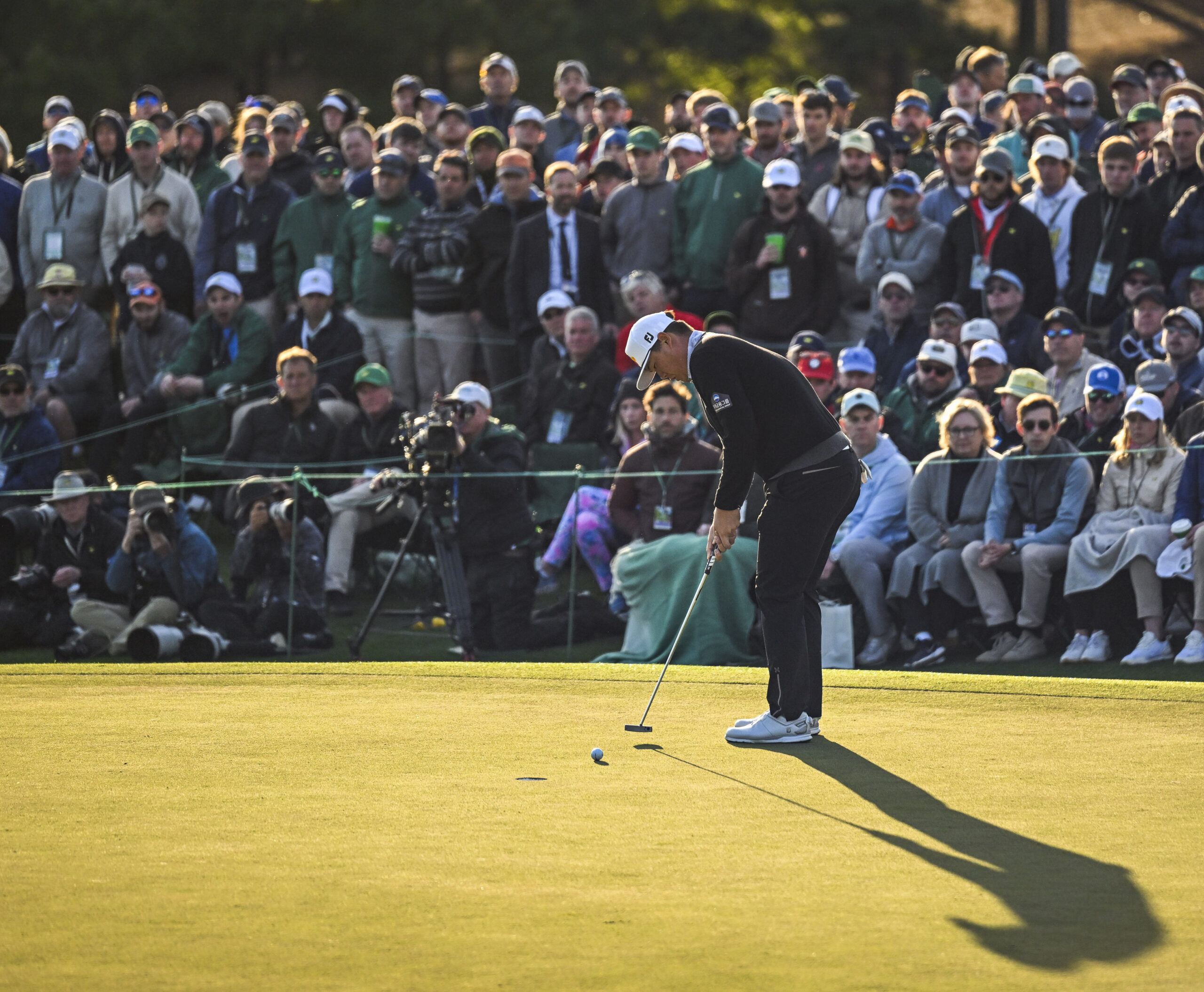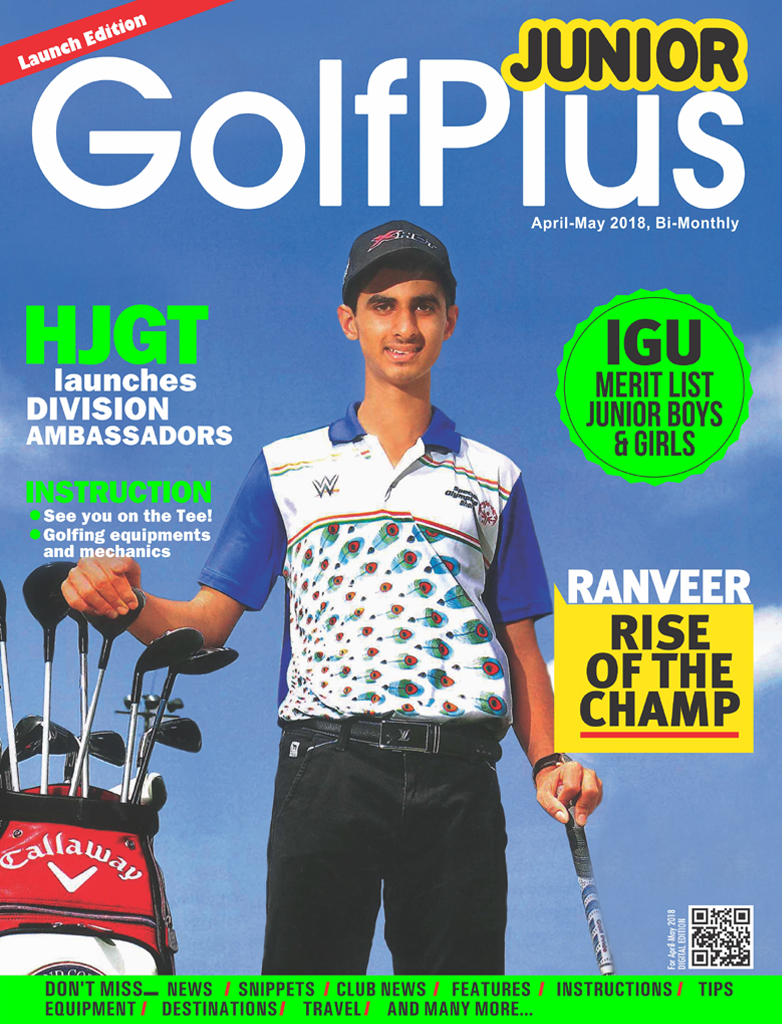With World Women’s Golf Day celebrated on 5th June 2018, Mike Wilson takes a look at the health of the women’s game in general and the professional circuits in particular and finds a somewhat opaque and on occasions, contradictory picture.
With the centenary of the end of women’s emancipation in the UK in which the Representation of the People Act 1918, granted some women over the age of 30 the right to vote for the first time, it’s all to easy to view those thorny issues such as the #metoo campaign following multiple revelations of sexual abuse and exploitation in Hollywood and the controversial gender pay gap still prevalent throughout much of the developed world, out of context and out of proportion.
But, considering it was a woman, according to the none-more reliable source than the British Golf Museum, that there is, ‘Documentary evidence of 1567-1568 indicates that Mary, Queen of Scots “Was seen playing golf and pall mall in the fields beside Seton,” for golf and the fair sex to enjoy the relationship it does today, it is also important to examine the issue through the correct end of the telescope.
On the participation front, in the absence of comprehensive and reliable global statistics, there is a growing awareness that golf is losing its appeal, especially – most worryingly – amongst the Millennials, and that it remains a male-dominated game, with, on average two-thirds of regular recreational golfers male, a quarter female, under 10% from the junior ranks, but, some claim, women’s golf is where the growth lies.
In England, following a high-profile campaign, ‘This Girl Can,’ aimed at getting more women into playing sport, golf would appear to the the biggest beneficiary, of the
680,000 people who now regularly play the game, almost 100,000 are women, but that’s just 14% and from a very low base.
The Rio Olympics ‘Bounce,’ where the LPGA embraced the opportunity in contrast to the PGA TOUR, which did its best to fluff its lines in the ‘Greatest show on earth,’ may be another contributory factor, especially given the emergence of the quintessential, ‘Girl next door, Charley Hull and her contemporaries such as Georgia Hall and Jodi Ewart Shadoff.
But that’s less than half the 35% of Germany’s 639,137 recorded golfers who are female and elsewhere Austria (35%), Switzerland (33%), Slovenia (32%) and the Netherlands (32%) showing the traditional golf heartlands a clean pair of heels in attracting women back into a game they have, for far too long, felt excluded to.
Slovakia, for its part, became the first-ever European country to report more women (45%) were regular golfers than men (42), but in a country with just a couple of dozen courses to its name, statistics can all too easily be misinterpreted.
Whether the R&A’s landmark decision to admit female members – to date, only a handful of, ‘Establishment ladies,’ have been invited to join – or the Honorable Company of Edinburgh Golfers reluctantly and belatedly reversing its men-only ruling has had an impact on more women playing the game, possible but impossible to quantify.
So, are more women really playing golf?. Research carried out by Sports Marketing Surveys Inc. on behalf of the European Tour shows that the answer is twofold; on the one hand, of the 9.3m adults and 1.7m children aged 6-17 years-old to have had some involvement in playing golf in its various forms, an estimated 33% of those who have taken part in golf were female.
But, on the other hand, it all depends on your definition of, ‘Golf,’ SMS reporting, “It’s clear where female interest lies – adventure golf, pitch and putt, golf simulator, or perhaps 9-hole golf – because this is fun, and less time consuming.’
Meanwhile, in the world’s largest golf territory, the USA, the National Golf Foundation last year found that 19% of all American golfers are women, according to the National Golf Foundation, which also reported, encouragingly, that, in 2006, 67% of all new registered golfers were women in 2006, which could also be interpreted as a significant drop in the number of males taking up the sport.
In Asia, there is little evidence at all, national or continental, to confirm or deny that golf is a growing pastime amongst Far Eastern women.
Despite Chinese national heroine Shan Shan Feng topping the LPGA World Rankings and winning bronze at the Rio Olympics, Thai superstar Ariya Jutangarn and her sister Moriya, a seemingly-endless conveyor belt of Korean kids and, most recently, the emergence of Indian girl Aditi Ashok in what is arguably golf’s largest untapped market, the entire structure of golf in the Far East is built around a male-dominated, business-driven culture that may take generations to change, as it did in the west.
Meanwhile, in the professional game, women’s golf has been something of a curate’s egg over recent years, a case of several steps forward, several back, progress, but painfully slow, no evidence at all of closing a gender pay gap that makes the BBC’s news room look like a level playing field.
Asia, as it has for almost a generation now, is leading the way, with 14 of the top-20 on the Rolex World Rankings from the Far East, compared to five from North America and a solitary European – Swede Anna Nordqvist – in fifth place, in the top 20, one of only four Europeans in the top-50.
But, despite the emergence and subsequent dominance of a truly international LPGA tour – it is played across 15 countries worldwide, with the USA again dominating proceedings with 14 LPGA tournaments, compared to Korea, which only boasts two, (along with China and the UK) and it’s disappointing to see Asian-based sponsors, such as ANA, Kia, Ricoh and Volvik exporting their financial backing to the west.
Especially so when one considers that between them Europe and the USA have cornered the, ‘Majors,’ market in women’s golf when, surely, Asia, by virtue of its commercial contribution and in possession of the vast majority of the top talent must seek – indeed demand – at least one of the sport’s leading ladies’ events.
The Olympics in Tokyo in 2020 will once again provide the LPGA and Asian women’s golf another high-profile platform on which to showcase itself on the world stage, and let’s hope they grab it again with both hands as they did in Rio two-years-ago, a full turnout of top eligible talent, embracing the Olympic concept, knocking the uber-conservative PGA TOUR-driven men’s game into the proverbial cocked hat.
However, the LPGA endured a tricky 2017, the normally sure-footed commissioner Mike Whan getting a couple of key calls – such as expunging scores from a first round in the final ‘Major’ of the season, the Evian Championship, and having to cancel a US$2.1m event in China at the last minute, echoes of a slew of Ladies European Tour tournaments dropping like nine-pins as a disastrous 2017 unfolded for the English-based outfit.
Still technically in the land of the living, courtesy, it is said only because of bail-outs from the LPGA, the R&A and the European Tour, the Ladies European Tour is in a critical condition and, insiders say, will do well to see 2018 through as a going concern.
With only seven events, including Europe’s two ‘Majors,’ confirmed almost two-months into the 2018 season, one can only imagine the amount of paddling beneath the surface acting CEO Mark Lichtenhein must be indulging in.
But, with only the top eight earning more than US$100,000 (otherwise known as ‘a loss’) on the circuit last year, the ex-European Tour senior executive needs to perform some Houdini-like stunts if, what is, after all, a very enjoyable and user-friendly circuit is to rise, like a Phoenix, from the ashes, although, no doubt, the mantra will be, like Mark Twain, that recent reports of its death, “Have been greatly exaggerated.”
And, considering the relative strength of ladies golf in Asia, certainly at the elite level in key territories such as China, Korea, Thailand and more recently, India, the Ladies Asian Golf Tour, can only muster five low-value events to date in 2018, and, with 2017 LAGT Order of Merit winner Pannarat Thanapolboonyaras leading the way with season’s earning of just over US$13,000, (if only her winnings were as lavish and lengthy as her name), its purpose as a feeder circuit to the LPGA must be called into question.
Perhaps the most closely-guarded secret in ladies golf in Asia – and world golf in general – is the power and popularity of the largely-domestic Korean LPGA Tour; 35 events, of which three are in China and one in Japan offer an annual prize fund of over US$20m, and with the 2017 Order of Merit winner Park Sung-hyun earning US$1.25m, it’s a clear, and viable pathway to the LPGA, as well as a domestic / regional circuit in its own right.
But it would be naive of golf to view females as the answer to the veritable maiden’s prayer, short and medium-term; society’s natural carers and increasingly career-driven, many leaving childbirth into their late 30s and early 40s, more women may have the disposable income, but not its equivalent in free time to indulge the game.
Which is precisely why organisations such as the National Golf Foundation (NGF) in the USA have started including women who never see a golf course from one year’s end to the next, but enjoy leisure time with family and friends playing different concepts of golf, explaining the huge success of the burgeoning hybrid sport-entertainment-lifestyle concept that is Top Golf, coming to a city near you before too long.
So, taking the temperature of women’s golf is a tricky task, but, with the inevitable #thisgirlcan hashtag, the question is, will she?
Many achievements have been accomplished but are far from consolidated, other goals a long way off, and a long, long way to go in a climate where golf – as we know it – appears to be dying a slow death.
By Michael Wilson









